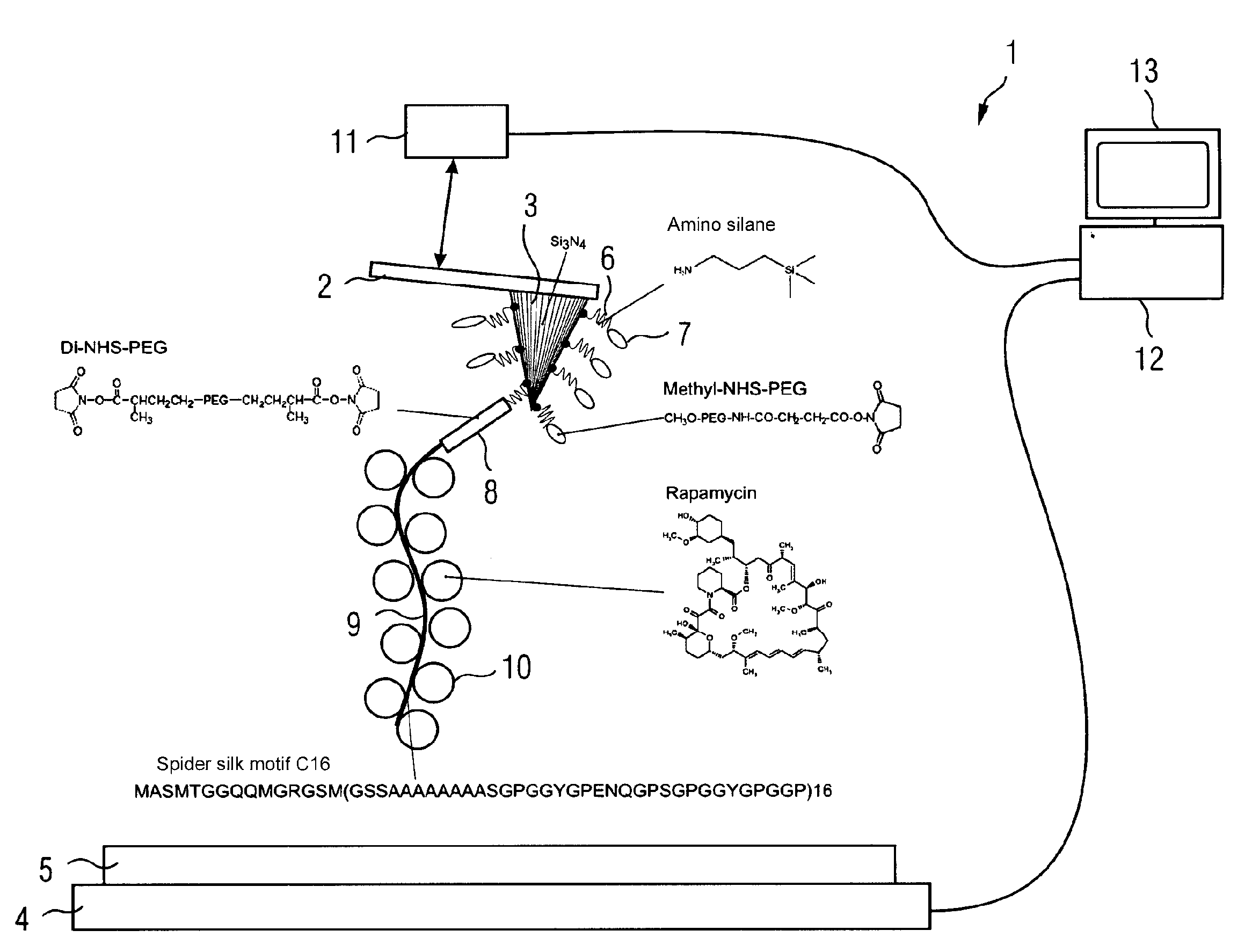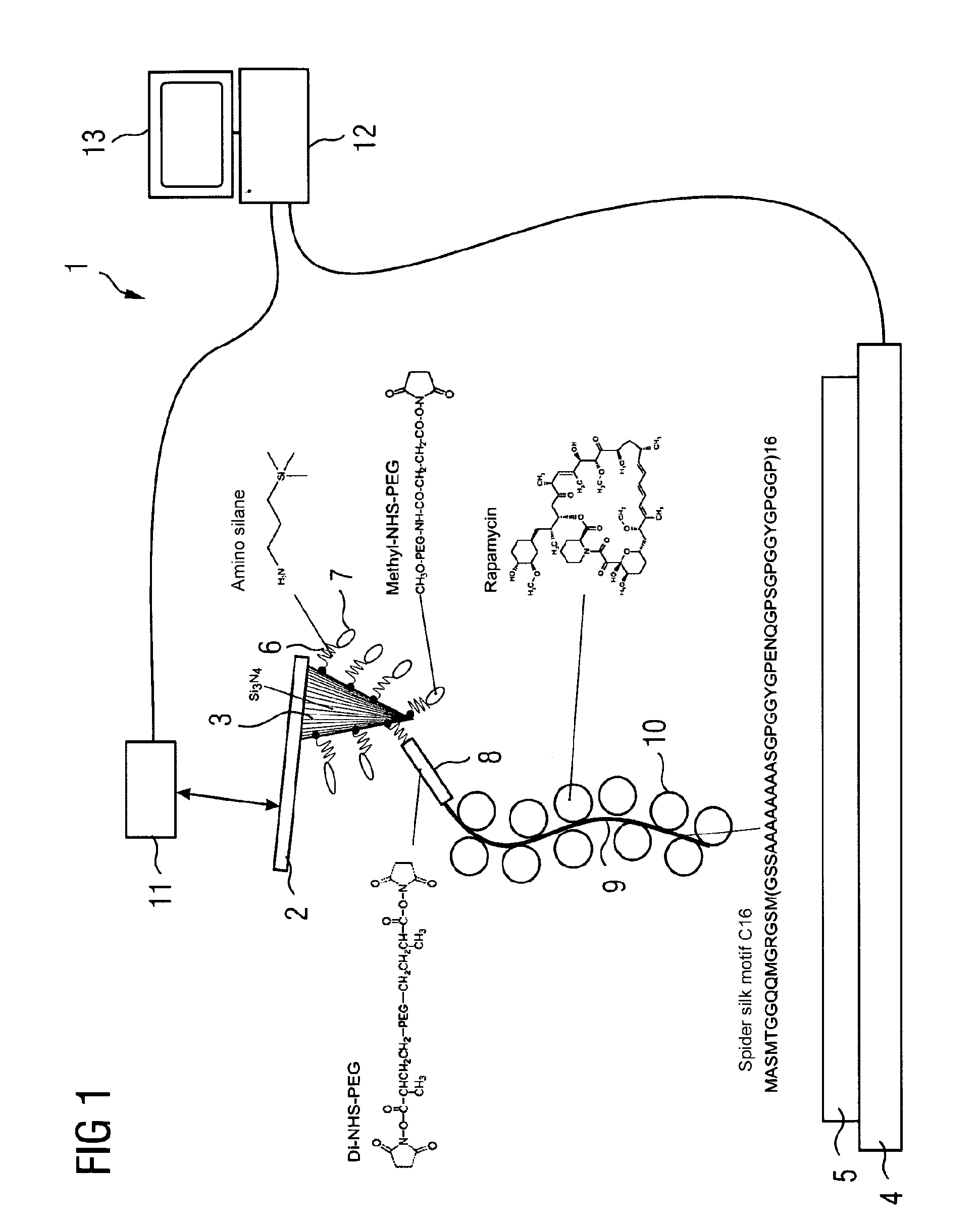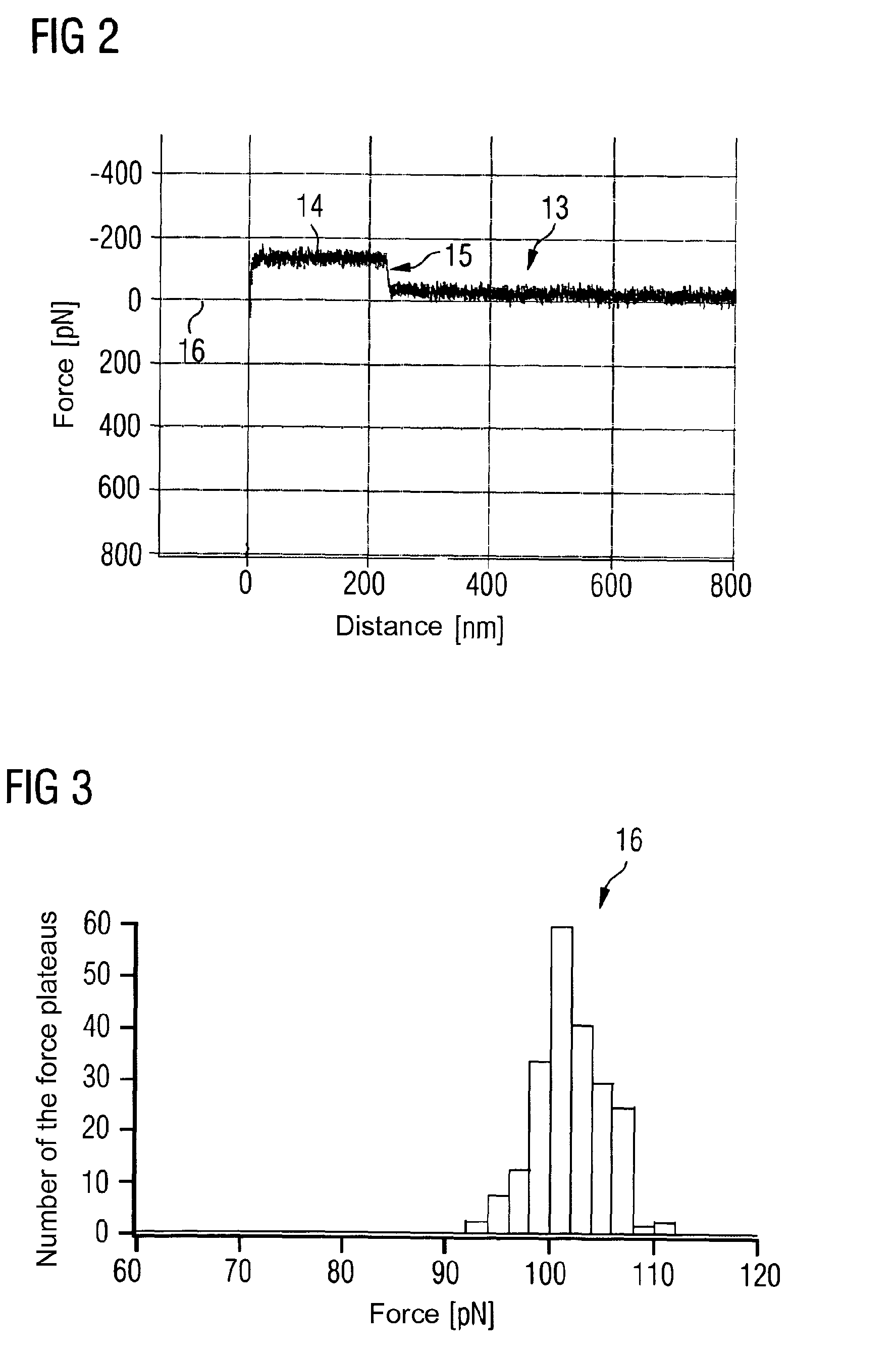Apparatus And Method For The Detection Of Forces In The Sub-Micronewton Range
- Summary
- Abstract
- Description
- Claims
- Application Information
AI Technical Summary
Benefits of technology
Problems solved by technology
Method used
Image
Examples
Embodiment Construction
[0031]FIG. 1 shows an atomic force microscope 1 which comprises a measuring tip 3 attached to a cantilever 2. The atomic force microscope 1 further comprises a sample holder 4 on which is arranged a sample 5.
[0032]The measuring tip 3 is coated with activating molecules 6, which, for instance, may be amino silane as shown in FIG. 1. The free ends of the activating molecules are connected to passivating molecules 7 and connecting molecules 8. The connecting molecules 7 may, for instance, be methyl-NHS-PEG which has at its free end a methyl end group. On the contrary, the connecting molecules 8 are Di-NHS-PEG which have at both ends a succinimidyl end group. To the connecting molecule 8 can be attached a carrier molecule 9, for which, for instance, a synthesized spider silk can be used, in particular the spider silk motif C16. The length of the carrier molecule is typically less than 5 nm. Laterally attached to the carrier molecule 9 are probe molecules 10, for instance an agent molecu...
PUM
 Login to View More
Login to View More Abstract
Description
Claims
Application Information
 Login to View More
Login to View More - R&D
- Intellectual Property
- Life Sciences
- Materials
- Tech Scout
- Unparalleled Data Quality
- Higher Quality Content
- 60% Fewer Hallucinations
Browse by: Latest US Patents, China's latest patents, Technical Efficacy Thesaurus, Application Domain, Technology Topic, Popular Technical Reports.
© 2025 PatSnap. All rights reserved.Legal|Privacy policy|Modern Slavery Act Transparency Statement|Sitemap|About US| Contact US: help@patsnap.com



